Table of Contents
I. Introduction to Teamwork Essays
II. Types of Teamwork Essays
III. Key Components of a Teamwork Essay
IV. Crafting Engaging Introductions in teamwork essays
V. Developing Insightful Body Paragraphs in teamwork essays
VI. Enhancing Critical Thinking Skills in Teamwork Essays
VII. Showcasing Personal Reflections in Teamwork Essays
VIII. Promoting Diversity and Inclusivity in Teamwork Essays
IX. Case Studies: Successful Teamwork Essays Examples
X. Tips for Writing Compelling Conclusions in Teamwork Essays
XI. Frequently Asked Questions (FAQs)
I. Introduction to Teamwork Essays
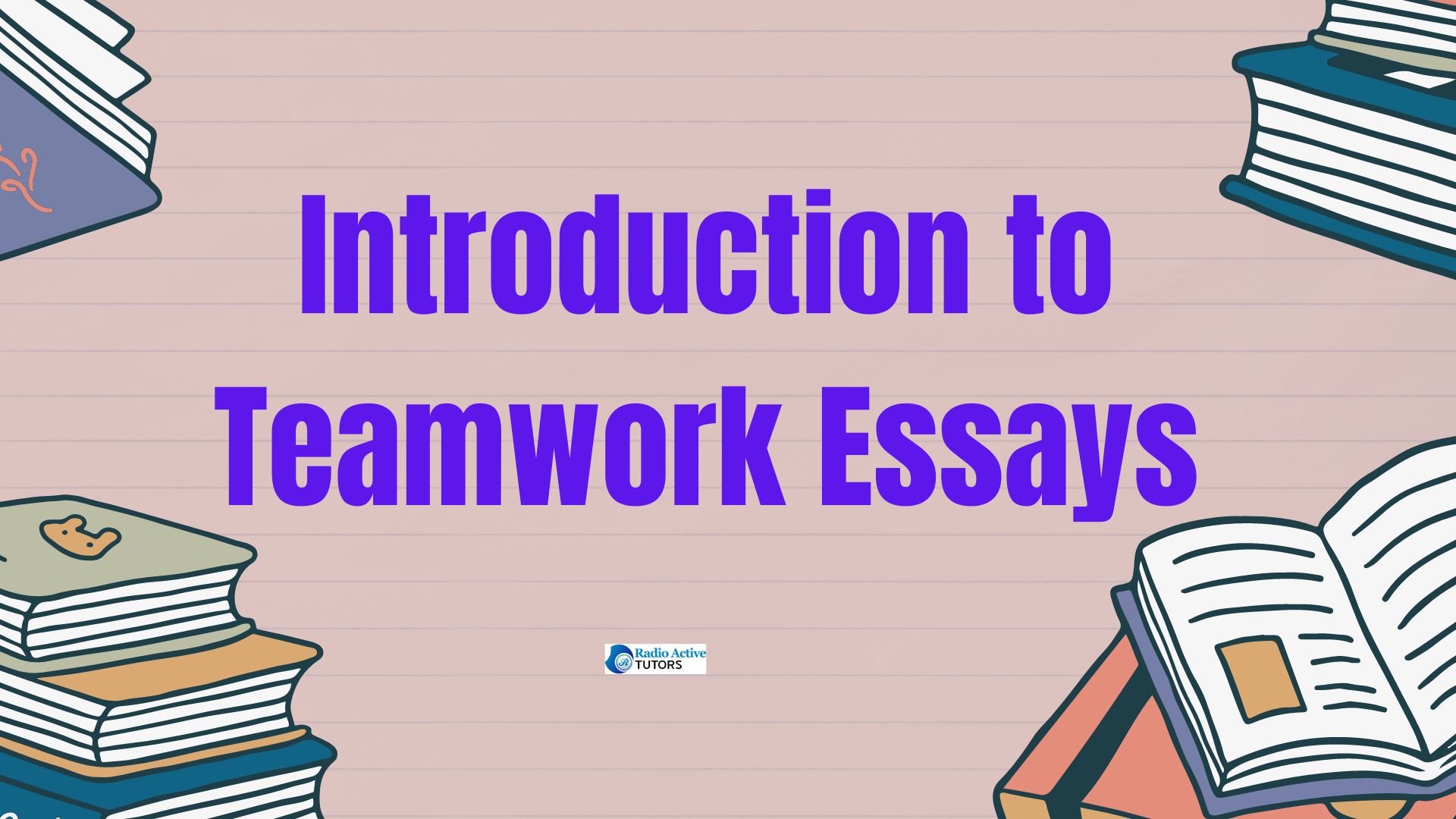
- Understanding the essence of teamwork essays
Understanding the essence of teamwork essays is paramount in crafting effective narratives that delve into the intricacies of collaboration and synergy. At its core, a teamwork essay transcends mere description; it serves as a platform to explore the dynamics, challenges, and triumphs inherent in working collectively towards a common goal. These essays provide a lens through which individuals can reflect on their own experiences within teams, drawing insights from both successes and failures.
Moreover, they facilitate a deeper understanding of the fundamental principles that underpin effective teamwork, including communication, trust, accountability, and mutual respect. By dissecting the nuances of team dynamics and showcasing the transformative power of collective effort, teamwork essays offer invaluable lessons for personal growth, academic exploration, and professional development.
II. Types of Teamwork Essays
- Analytical essays on teamwork dynamics
Analytical essays on teamwork dynamics occupy a central position within the spectrum of teamwork essays, offering a comprehensive examination of the intricacies and complexities inherent in collaborative endeavors. These essays delve deep into the mechanics of teamwork, dissecting various factors that influence group cohesion, productivity, and effectiveness. Through rigorous analysis, they scrutinize the interplay between individual contributions, team structure, communication strategies, and leadership dynamics.
By scrutinizing real-world examples and theoretical frameworks, such as Bruce Tuckman’s stages of group development or Belbin’s team roles, analytical essays provide valuable insights into the factors that foster or impede successful teamwork. Moreover, they encourage critical thinking and scholarly inquiry, prompting readers to question assumptions, evaluate evidence, and propose innovative solutions to enhance team performance. In essence, analytical essays on teamwork dynamics serve as intellectual canvases for exploring the multifaceted nature of collaboration and paving the way for future advancements in team-based research and practice.
- Reflective essays on personal teamwork experiences
Reflective essays on personal teamwork experiences offer a profound journey into the realm of self-discovery and growth, as individuals introspectively explore their roles, contributions, and interactions within team settings. These essays serve as platforms for individuals to narrate their own narratives, recounting pivotal moments, challenges faced, and lessons learned throughout their collaborative journeys.
By reflecting on both successes and setbacks, individuals gain a deeper understanding of their strengths, weaknesses, and areas for improvement as team members. Moreover, these essays foster empathy and connection, as readers resonate with the authentic accounts of triumphs and tribulations shared by their peers. Through the process of self-reflection and narrative storytelling, reflective essays on personal teamwork experiences not only provide insights into individual growth but also contribute to a broader understanding of teamwork dynamics and the human element within collaborative endeavors.
- Comparative essays on different teamwork approaches
In the realm of teamwork essays, comparative essays on different teamwork approaches serve as illuminating windows into the diverse methodologies and strategies employed in collaborative settings. These essays delve into contrasting frameworks, methodologies, and philosophies of teamwork, shedding light on their respective strengths, weaknesses, and applications across various contexts. By juxtaposing different approaches—such as traditional hierarchical structures versus agile, self-organizing teams, or autocratic leadership styles versus participative decision-making—comparative essays provide readers with valuable insights into the multifaceted nature of teamwork.
Through thoughtful analysis and critical evaluation, readers gain a nuanced understanding of the complexities inherent in selecting and implementing appropriate teamwork approaches based on situational factors, organizational culture, and team dynamics. Ultimately, comparative essays on different teamwork approaches foster a deeper appreciation for the diversity of perspectives and methodologies within the realm of collaborative work, empowering individuals to make informed decisions and cultivate adaptive, effective teamwork strategies.
III. Key Components of a Teamwork Essay
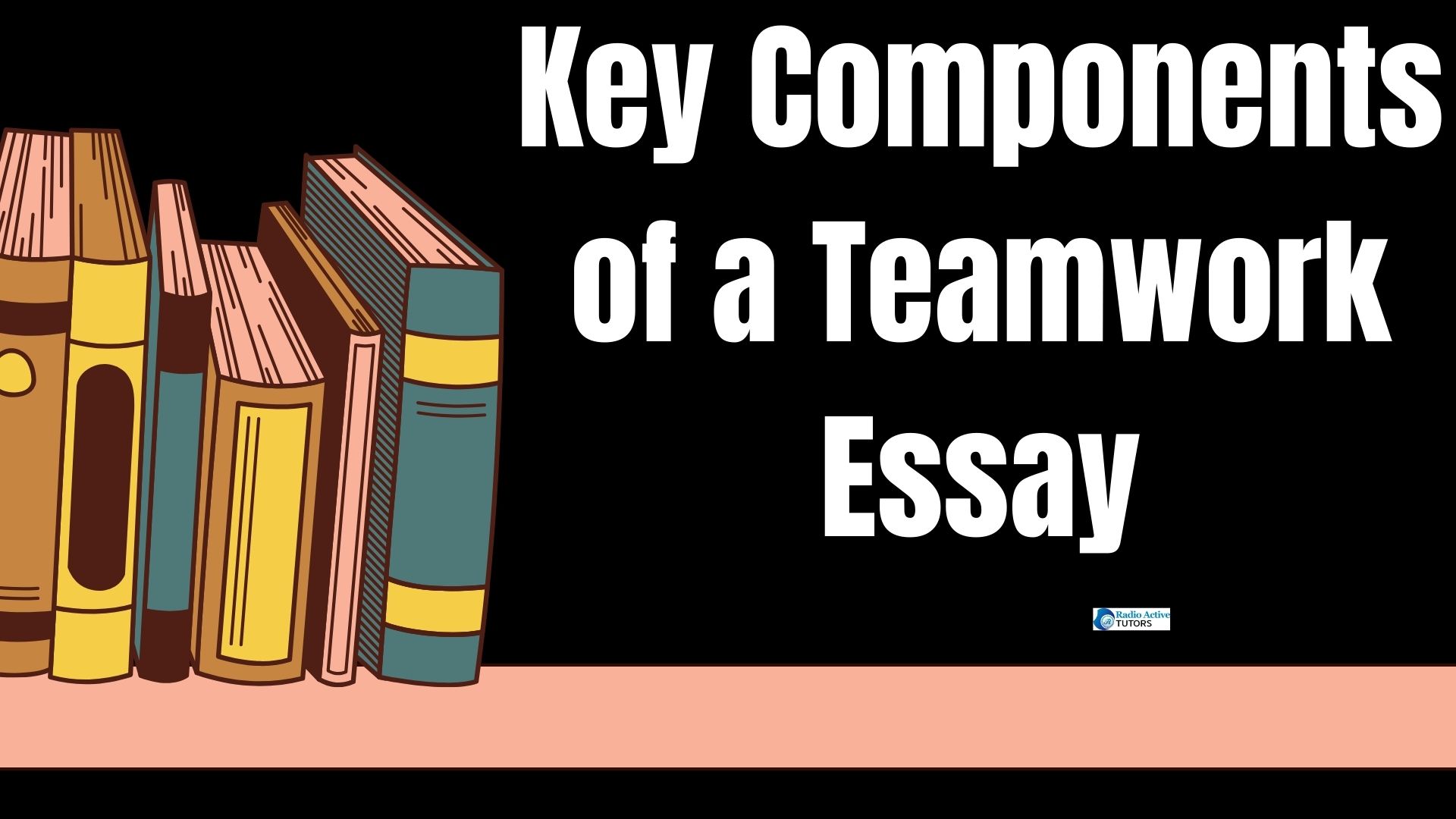
- Introduction: Setting the stage and stating the purpose in Teamwork Essays
The introduction serves as the gateway to a teamwork essay, laying the foundation for what follows by setting the stage and articulating the overarching purpose. It is a crucial component that captivates the reader’s attention and provides context for the exploration of teamwork dynamics. In this section, writers establish the relevance of the topic, highlighting the importance of effective collaboration in achieving common goals.
Moreover, the introduction articulates the specific objectives of the essay, whether it’s to analyze teamwork theories, showcase personal experiences, or compare different approaches to collaboration. By framing the essay’s scope and purpose, the introduction piques the reader’s curiosity and sets the tone for a thoughtful examination of teamwork principles and practices.
- Body paragraphs: Exploring teamwork theories, examples, and case studies
The body paragraphs constitute the heart of a teamwork essay, offering a comprehensive exploration of teamwork theories, real-life examples, and compelling case studies. Within this section, writers delve into the rich tapestry of theoretical frameworks that underpin effective collaboration, such as Bruce Tuckman’s stages of group development or Meredith Belbin’s team roles. These theories provide a lens through which to analyze and interpret the dynamics of teamwork, elucidating the stages, processes, and factors that contribute to successful group performance.
Additionally, the body paragraphs feature a diverse array of examples and case studies drawn from various fields, ranging from business and healthcare to sports and the arts. By showcasing real-world instances of teamwork in action, writers illustrate the practical application of theoretical concepts and highlight the transformative impact of collective effort. Through a judicious blend of theory and practice, the body paragraphs illuminate the complexities and nuances of teamwork, inspiring readers to critically reflect on their own collaborative experiences and glean valuable insights for future endeavors.
- Conclusion: Summarizing key points and highlighting the importance of teamwork
The conclusion serves as the culmination of a teamwork essay, synthesizing the key points and reinforcing the significance of collaborative effort. In this section, writers recapitulate the main insights gleaned from the exploration of teamwork theories, examples, and case studies. By summarizing the salient findings and lessons learned, the conclusion offers readers a cohesive overview of the essay’s central arguments and contributions.
Moreover, this section emphasizes the enduring importance of teamwork in achieving shared objectives, whether in academic, professional, or personal contexts. By highlighting the transformative power of collective effort and the role of collaboration in fostering innovation, productivity, and mutual support, the conclusion leaves readers with a profound appreciation for the value of teamwork. Ultimately, it inspires individuals to embrace the principles of cooperation, communication, and synergy as catalysts for success in their future endeavors.
IV. Crafting Engaging Introductions in teamwork essays
Crafting engaging introductions is essential in teamwork essays to capture the reader’s attention and set the stage for the discussion ahead. One effective approach is to begin with a compelling anecdote, quote, or statistic that highlights the importance or relevance of teamwork in contemporary society. This can draw readers in and pique their curiosity, motivating them to continue reading. Additionally, providing a brief overview of the essay’s structure and objectives helps orient the reader and provides a roadmap for what to expect.
By clearly articulating the purpose and significance of the essay, writers establish credibility and create a sense of anticipation for the insights to come. Ultimately, crafting engaging introductions sets the tone for the entire essay, laying the groundwork for a compelling exploration of teamwork dynamics and its impact on individual and collective success.
V. Developing Insightful Body Paragraphs in teamwork essays
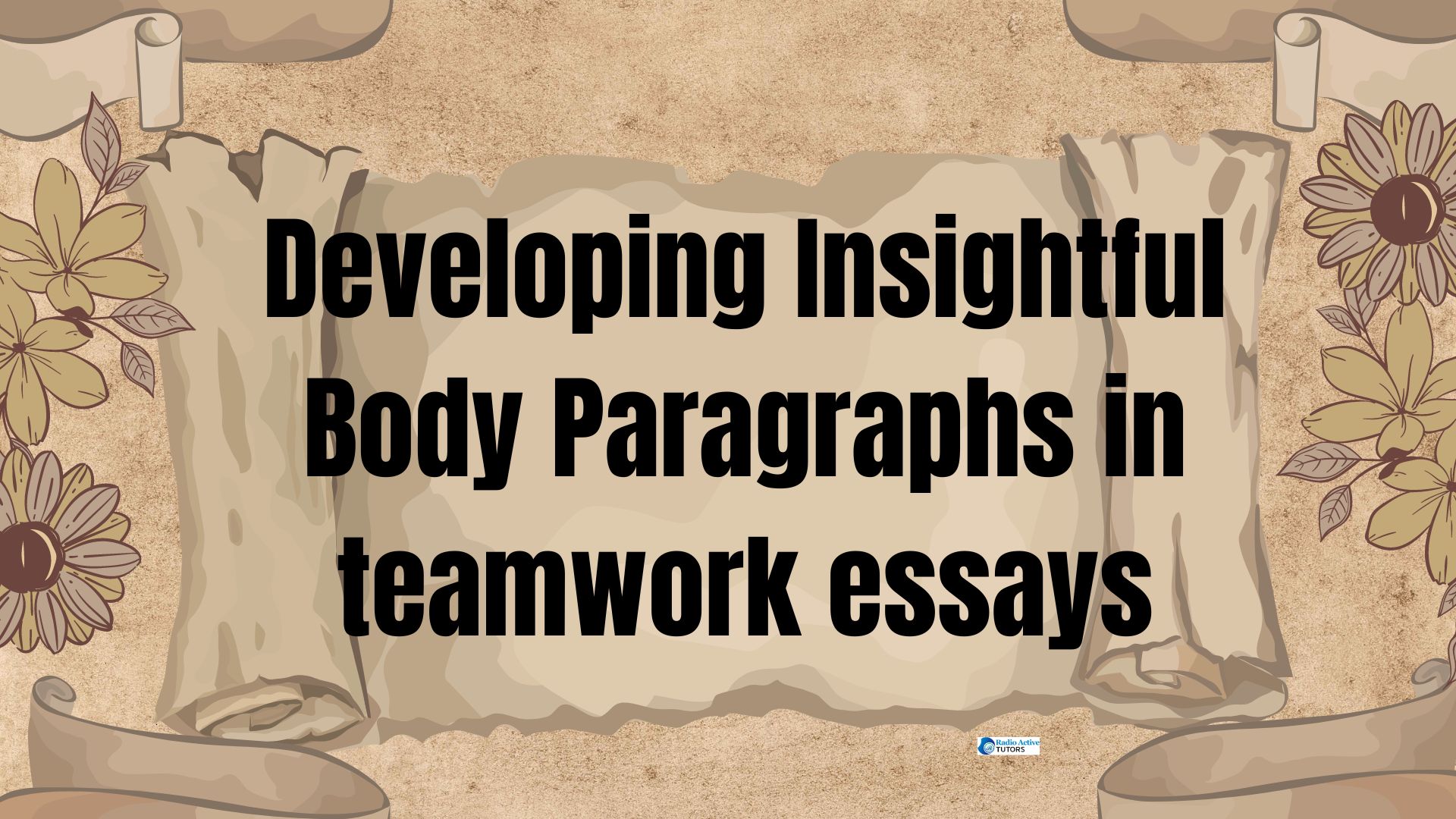
Developing insightful body paragraphs is crucial in teamwork essays, as they constitute the substantive core of the narrative, providing a detailed exploration of teamwork theories, examples, and case studies. Each body paragraph should focus on a specific aspect of teamwork, such as communication strategies, conflict resolution techniques, or leadership dynamics, and provide in-depth analysis supported by relevant evidence and examples.
By delving into the nuances of teamwork dynamics, writers enable readers to gain a comprehensive understanding of the complexities involved in collaborative efforts. Moreover, incorporating real-life examples and case studies offers concrete illustrations of theoretical concepts in action, making the content more relatable and engaging for the reader. Overall, well-developed body paragraphs serve to elucidate the intricacies of teamwork, foster critical thinking, and inspire readers to apply these insights to their own collaborative endeavors.
VI. Enhancing Critical Thinking Skills in Teamwork Essays
- Encouraging readers to critically evaluate teamwork strategies
Encouraging readers to critically evaluate teamwork strategies is paramount in fostering enhanced critical thinking skills within the realm of teamwork essays. By prompting readers to scrutinize and analyze various approaches to collaboration, writers empower them to assess the effectiveness, relevance, and applicability of different teamwork strategies in diverse contexts. Through this process, readers develop the ability to discern between successful and ineffective teamwork practices, identify underlying assumptions, and evaluate the evidence supporting specific approaches.
Moreover, encouraging critical evaluation of teamwork strategies prompts readers to reflect on their own experiences and beliefs about collaboration, fostering a deeper understanding of the complexities involved in working effectively within teams. Ultimately, by promoting critical thinking skills in teamwork essays, writers equip readers with the tools and mindset necessary to navigate the intricacies of collaborative endeavors and drive positive outcomes in their personal and professional lives.
- Providing tools for analyzing the effectiveness of team dynamics
Providing tools for analyzing the effectiveness of team dynamics is instrumental in enhancing critical thinking skills within teamwork essays. These tools offer readers a structured framework for evaluating the interplay of various factors that influence team performance, such as communication patterns, leadership styles, and group cohesion. By introducing concepts like SWOT analysis (Strengths, Weaknesses, Opportunities, Threats) or conducting post-mortem reviews of team projects, writers enable readers to assess the strengths and weaknesses of their team’s dynamics objectively.
Moreover, these tools encourage readers to consider the broader implications of their observations, such as how team dynamics impact decision-making processes, conflict resolution, and overall productivity. By equipping readers with analytical tools to deconstruct and analyze team dynamics, teamwork essays foster a deeper understanding of the intricacies involved in collaborative work and empower individuals to drive positive change within their teams.
- Stimulating discussion on the challenges and benefits of collaboration
Stimulating discussion on the challenges and benefits of collaboration is a key aspect of enhancing critical thinking skills within teamwork essays. By exploring both the obstacles and advantages inherent in collaborative endeavors, writers encourage readers to engage in thoughtful reflection and analysis. Discussions on challenges may encompass issues such as communication barriers, conflicting priorities, and interpersonal conflicts, prompting readers to consider how these hurdles can impede team effectiveness and productivity.
Conversely, examining the benefits of collaboration—including enhanced creativity, shared expertise, and increased problem-solving capabilities—encourages readers to recognize the value of working together towards common goals. By fostering dialogue on both the challenges and benefits of collaboration, teamwork essays prompt readers to develop a nuanced understanding of the complexities involved in teamwork, thus sharpening their critical thinking skills and equipping them with the insight to navigate collaborative environments more effectively.
VII. Showcasing Personal Reflections in Teamwork Essays
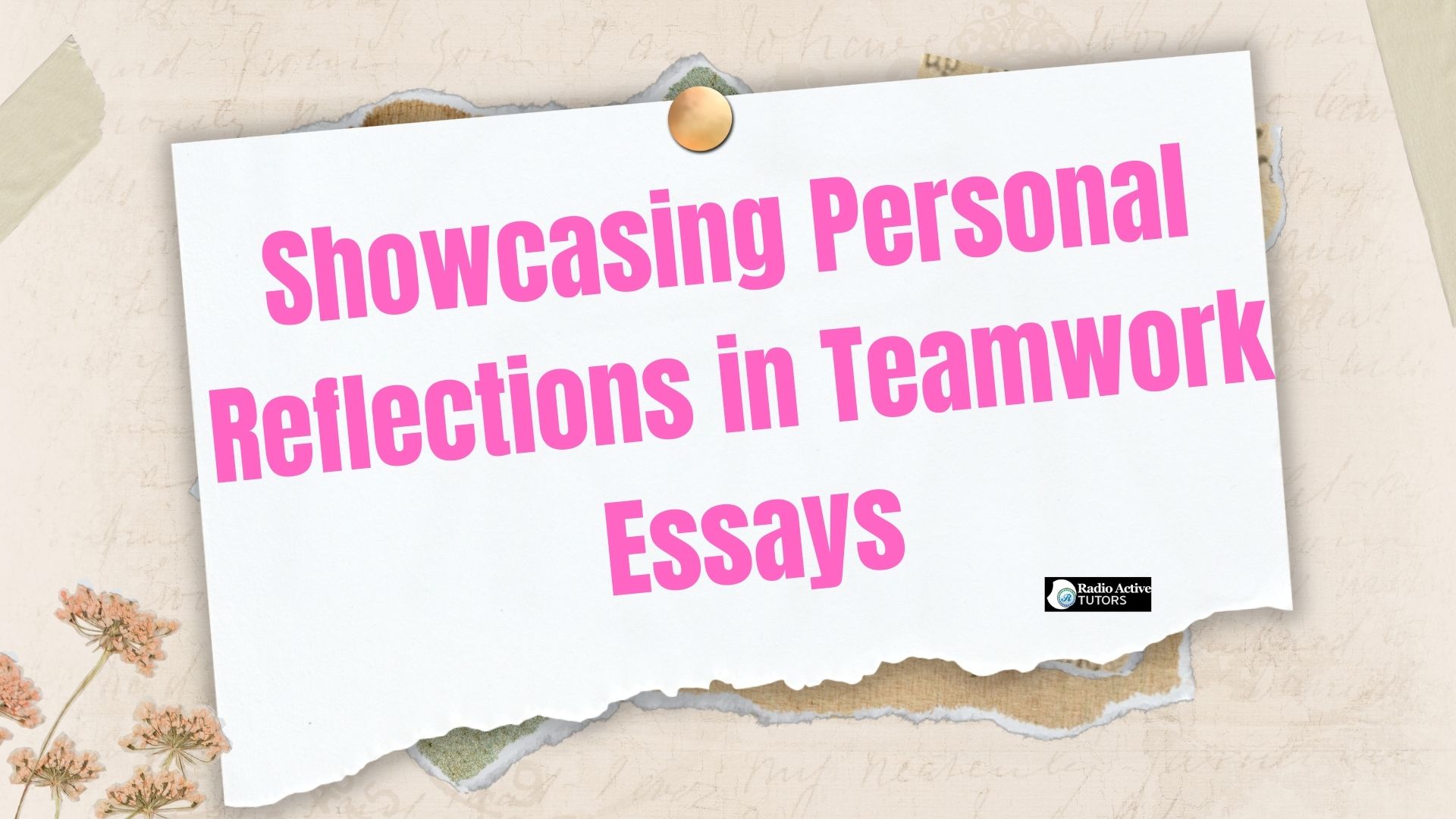
- Encouraging self-reflection on individual teamwork experiences
Encouraging self-reflection on individual teamwork experiences is a pivotal aspect of showcasing personal reflections within teamwork essays. By prompting readers to introspectively examine their own contributions, strengths, and areas for growth within team settings, writers facilitate a deeper understanding of the dynamics at play in collaborative environments. Through self-reflection, individuals can discern patterns in their behavior, identify effective strategies for collaboration, and pinpoint areas where they may need to improve.
Additionally, showcasing personal reflections allows readers to connect with the narratives on a more personal level, as they relate their own experiences to those shared within the essay. By encouraging self-reflection on individual teamwork experiences, teamwork essays foster a culture of continuous learning and development, empowering readers to become more self-aware and effective collaborators in future endeavors.
- Identifying strengths and areas for improvement in teamwork skills in Teamwork Essays
Identifying strengths and areas for improvement in teamwork skills is a crucial aspect of showcasing personal reflections within teamwork essays. Through introspection and candid analysis of past collaborative experiences, individuals can discern the specific contributions they bring to a team, whether it be effective communication, leadership abilities, or problem-solving skills. Moreover, by acknowledging areas for improvement, such as conflict resolution, time management, or adaptability, individuals demonstrate a commitment to personal growth and development within team settings.
This process of self-awareness allows individuals to actively work on honing their strengths while addressing areas of weakness, ultimately contributing to their overall effectiveness as team members. By highlighting these reflections within teamwork essays, writers not only provide readers with valuable insights into the complexities of collaborative dynamics but also inspire them to engage in similar self-assessment and improvement efforts within their own teams.
- Emphasizing the importance of continuous learning and growth in Teamwork Essays
Emphasizing the importance of continuous learning and growth is paramount in showcasing personal reflections within teamwork essays. By acknowledging that collaboration is an ongoing journey, individuals underscore the need for perpetual self-improvement and adaptation within team settings. Through personal reflections, individuals can recognize that each collaborative experience offers opportunities for learning and development, whether through successes or challenges encountered along the way.
Embracing a growth mindset, individuals demonstrate a commitment to acquiring new skills, refining existing ones, and fostering a deeper understanding of teamwork dynamics. Moreover, by sharing these reflections within teamwork essays, writers inspire readers to adopt a similar attitude towards continuous learning and growth, fostering a culture of innovation, resilience, and excellence within collaborative environments.
VIII. Promoting Diversity and Inclusivity in Teamwork Essays
- Acknowledging the value of diverse perspectives in collaborative settings
Acknowledging the value of diverse perspectives in collaborative settings is paramount in fostering inclusive and effective teamwork. Embracing diversity not only enriches the collective pool of ideas and experiences but also enhances creativity, problem-solving, and innovation within teams. In this context, promoting diversity and inclusivity in teamwork essays involves recognizing and celebrating the unique contributions of individuals from different backgrounds, cultures, and identities.
By acknowledging the importance of varied viewpoints and experiences, writers can inspire readers to cultivate an environment of respect, openness, and empathy within their own collaborative endeavors. Moreover, by highlighting the benefits of diversity in driving organizational success and societal progress, teamwork essays play a crucial role in advocating for equity and social justice in the workplace and beyond.
- Discussing strategies for fostering inclusivity and equity within teams
Discussing strategies for fostering inclusivity and equity within teams is essential in promoting diversity and creating environments where every member feels valued and respected. These strategies encompass a range of initiatives, including implementing inclusive hiring practices, providing diversity training and education, establishing clear policies against discrimination and harassment, and actively promoting representation and participation from underrepresented groups.
Additionally, fostering open communication channels, encouraging active listening, and creating opportunities for all team members to contribute and share their perspectives can help break down barriers and promote a culture of inclusivity. By addressing systemic biases and actively working to create more equitable opportunities for all, teams can harness the full potential of their diverse talents and perspectives, leading to greater innovation, collaboration, and success.
- Examining the role of cultural competence in effective teamwork
Examining the role of cultural competence in effective teamwork is essential for promoting diversity and inclusivity within collaborative settings. Cultural competence encompasses the ability to understand, respect, and effectively interact with individuals from diverse cultural backgrounds. In multicultural teams, possessing cultural competence enables team members to navigate differences in communication styles, values, and norms, fostering mutual understanding and trust. Moreover, cultural competence facilitates the integration of diverse perspectives and experiences, leading to more creative problem-solving and innovative solutions.
By recognizing and valuing the contributions of individuals from different cultural backgrounds, teams can cultivate an environment where everyone feels empowered to share their unique insights and perspectives. Ultimately, prioritizing cultural competence in teamwork essays underscores the importance of embracing diversity as a source of strength and enrichment, rather than a barrier to collaboration.
IX. Case Studies: Successful Teamwork Essays Examples
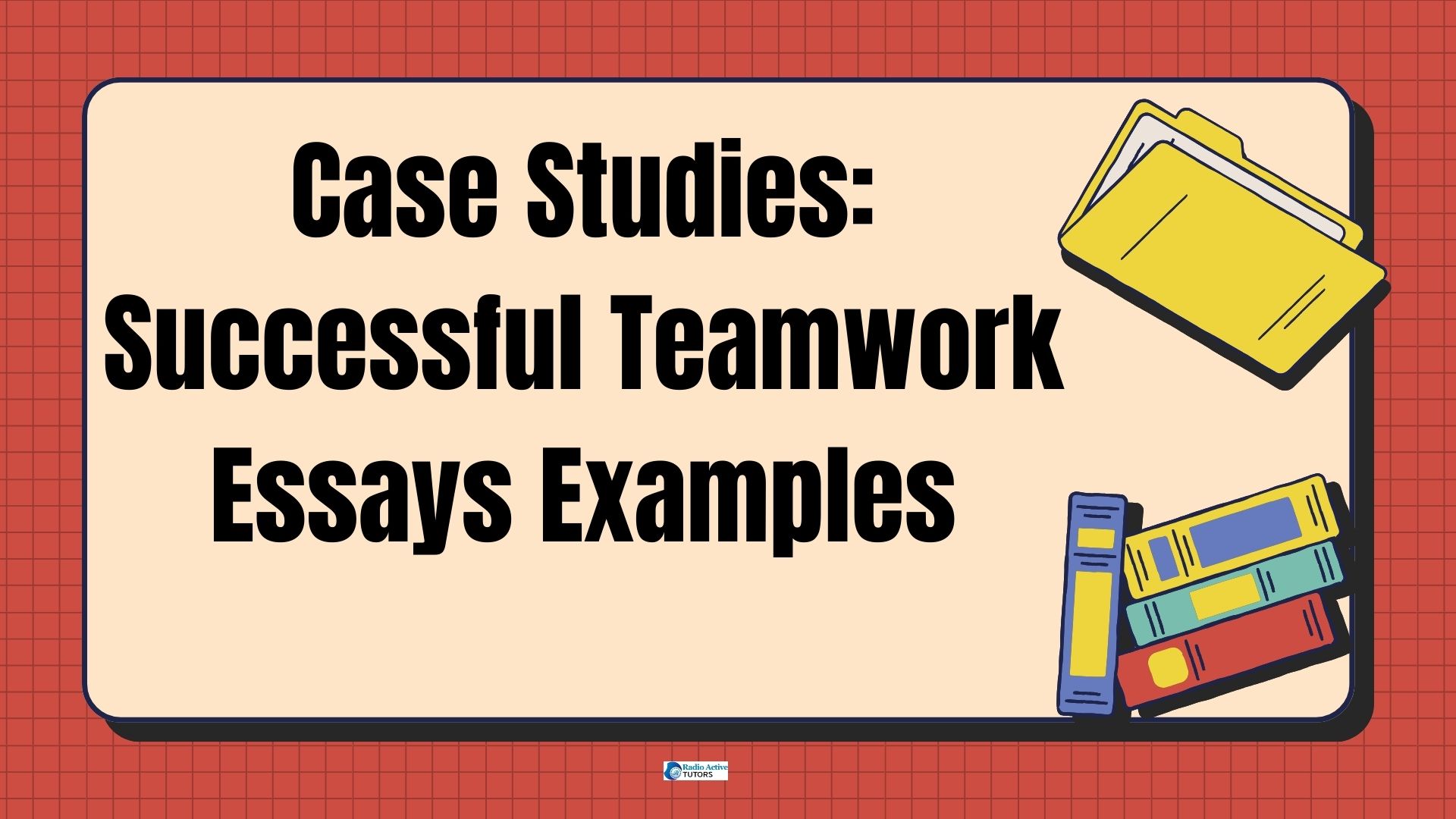
Case studies serve as invaluable tools in teamwork essays, providing concrete examples of successful collaboration across various domains. These real-world examples offer readers insight into the strategies, challenges, and outcomes of effective teamwork initiatives. By examining case studies, readers can glean practical lessons and best practices that they can apply to their own collaborative endeavors. Whether highlighting a groundbreaking project in the business world, a championship-winning sports team, or a life-saving medical team, case studies showcase the transformative power of teamwork in achieving shared goals.
Moreover, these examples inspire readers by demonstrating the tangible impact of collaboration on innovation, productivity, and success. By incorporating case studies into teamwork essays, writers not only enrich the narrative with compelling stories but also provide readers with tangible evidence of the benefits of effective teamwork.
X. Tips for Writing Compelling Conclusions in Teamwork Essays
Crafting a compelling conclusion is essential in teamwork essays to leave a lasting impression and reinforce key insights. One effective strategy is to summarize the main points discussed throughout the essay, emphasizing the significance of teamwork in achieving common goals. By succinctly restating the thesis and main arguments, writers ensure that readers grasp the overarching message of the essay. Additionally, offering a thought-provoking reflection or posing a question for further consideration can encourage readers to engage with the topic beyond the confines of the essay. Furthermore, providing recommendations for future research or practical applications of teamwork principles can inspire readers to explore the subject in greater depth.
Ultimately, by offering clear guidance on how to conclude their essays effectively, writers empower readers to leave with a deeper appreciation for the importance of teamwork and its impact on personal, academic, and professional success.
XI. Frequently Asked Questions (FAQs)
- What is the best way to start a teamwork essay?
- How can I incorporate personal experiences into my essay?
- Are there specific teamwork theories I should include in my essay?
- How do I address challenges faced by teams in my essay?
- Can I use teamwork examples from pop culture or literature in Teamwork Essays?
- Should I include citations in my teamwork essay?
- What are some common mistakes to avoid in teamwork essays?
- How can I conclude my essay effectively?
- Is it necessary to discuss the role of technology in teamwork essays?
- How do I ensure my essay promotes diversity and inclusivity in teamwork?
